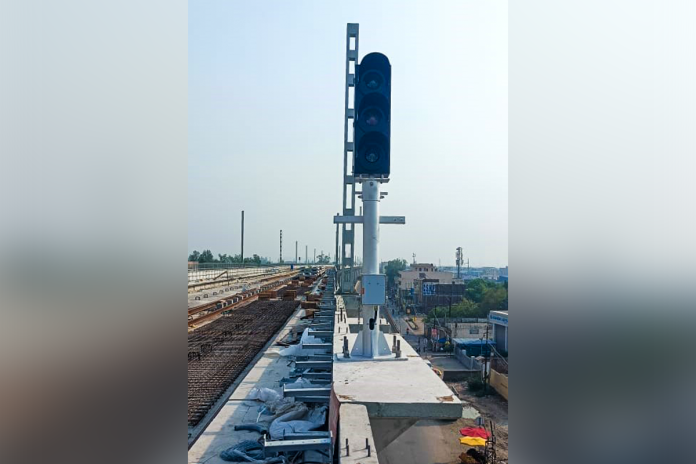Snapshot
The ETCS-Level 2 Signalling will ensure the safe travel of passengers in the high-frequency RRTS train operation and seamless travel in all weather conditions.
The installation of signalling equipment for the operation of trains has picked up pace in the priority section of India’s first RRTS corridor being implemented between Delhi-Ghaziabad-Meerut.
NCRTC is using several state-of-the-art systems for the first time in India for the upcoming operation of the RRTS trainsets.
RRTS will become the world’s first network using hybrid Level-3 technology of Modern European Train Control System over LTE ( long-term evolution) network which will be implemented in a phased manner. In the first phase, ETCS Level-2 will be implemented.
For the operations of RRTS trains, NCRTC is implementing hybrid Level-3 technology of the European Train Control System, one of the most advanced signalling and train control systems in the world.
This will be for the first time in the world that a combination of the latest ETCS Standard, the latest Interlocking and Automatic Train Operation (ATO) over Long-Term Evolution radio will be deployed. It will enable a higher frequency of trains, better headways and thus increasing throughput.
The idea of RRTS was conceived to provide ease of commuting to the people of NCR, encourage them to use public transport more and reduce the vehicular and environmental burden. Interconnectivity between the different modes of public transport as well as different corridors of the RRTS can be a deciding factor ensuring that.
ETCS Level-2 system is a solution to this conundrum as it will allow interoperability among different RRTS corridors which are also being done for the first time in the country.
The chosen signalling system is a radio technology-based signalling system in which through continuous control and supervision, not only the speed of the train could be estimated but appropriate modifications can also be made as per requirements duly considering the comfort of the commuters. The ETCS- Level 2 Signalling will ensure the safe travel of passengers in the high-frequency RRTS train operation and seamless travel in all weather conditions.
Moreover, the proposed signalling will also be synced with the Platform Screen Doors (PSD), which will be provided at all the RRTS stations of the corridor. ETCS Level-2 with PSD will be implemented for the first time in the world. Passenger safety being one of the priority areas in the implementation of the RRTS, the train will run only after both, the door of the train and the Platform Screen Door are closed. This will safeguard the commuters from any unforeseen situations.
This system will also be able to optimise rail line capacity and ensure the better operations of trains. It will be one of the most advanced train control systems in the world, with significant benefits related to maintenance, cost and energy savings, safety, reliability, punctuality, and traffic efficiency.
This signalling system will be equipped with Automatic Train Operation (ATO) functionality in the coming days, which controls the traction system, acceleration and braking system of trains. This will facilitate efficient and reliable RRTS service.
Indoor installation, outdoor installation, cable laying and system testing, for Signalling and telecom, are going on at RRTS stations. In this process, the trial run of trains will begin after the installation of all signalling equipment and their thorough testing.
In the indoor installation, for the operation of trains, equipment which helps the trains to get signals to stop and start, is installed in the technical rooms at the stations. These devices collect and monitor all the information related to the operation of trains. The cabling work is also very important in this process which is currently being carried out in the Priority Section of the RRTS Corridor.
Outdoor installation includes all equipment installed outside technical rooms. This includes equipment such as a Point Machine (track changing device), Signal (signal of red and green light for movement of trains) and Axle Counter (device to show the location of trains). Along with this, LTE and telecom equipment are being installed.
After the completion of all these processes, the process of system testing begins in which all the types of equipment are checked. In this process, all the equipment, after ensuring the desired performance, is made ready for the trial run of trains.
Sahibabad, Ghaziabad, Guldhar, Duhai and Duhai Depot Station are the five stations in the Priority Corridor, for which construction work has been reached in the last stage. After the installation of signalling equipment, this section will be ready for the trial run of RRTS trains, which is likely to be commenced by the end of this year.
The delivery of RRTS trainsets has already been started from the manufacturing facility of Savli, Gujarat. The first trainset has already reached Duhai Depot.


